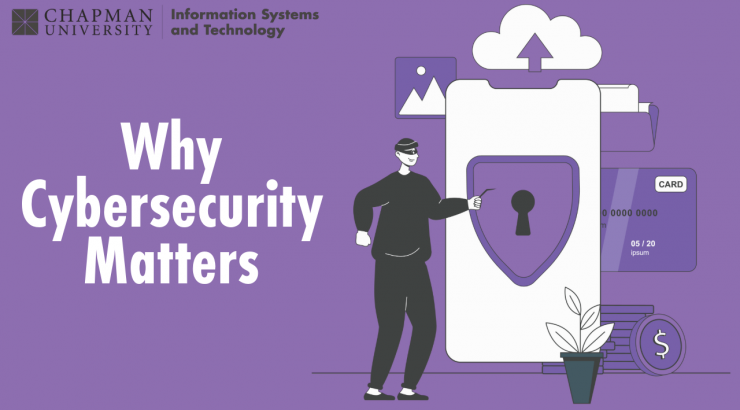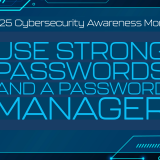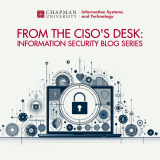
The Critical Importance of Cybersecurity on Campus
November 13, 2024
As faculty, staff, administrators, and students increasingly rely on digital devices and the Internet for learning, research, and communication, the importance of safeguarding our digital assets cannot be overstated. Cyber threats constantly evolve, posing significant risks to our personal information, academic records, and institutional data.
Why Cybersecurity Matters
Cybersecurity is crucial for protecting our data’s integrity, confidentiality, and availability. Without robust cybersecurity measures, our personal and institutional information is vulnerable to theft, manipulation, and destruction. Cyberattacks can lead to severe consequences, including identity theft, financial loss, compromised academic records, and even disruption of campus operations. As campus community members, we all have a role to play in maintaining a secure digital environment.
Throughout October, we shared a series of blogs and social media posts with the campus focused on essential cybersecurity practices. Here’s a quick recap:
- Creating a Strong Password. A strong password is your first line of defense against cyber threats. We emphasized the importance of:
-
- Use at least 12 characters with a mix of uppercase and lowercase letters, numbers, and special characters.
- Avoid easily guessable passwords like “password123” or “123456.”
- Create unique passwords for different accounts and utilize a password manager to store them securely.
- Using Two-Factor Authentication (2FA). 2FA adds an extra layer of security by requiring an additional verification step:
-
- It enhances security by requiring something you know (password) and something you have (smartphone or another device).
- Most online services now support 2FA, making it easy to secure your accounts.
- Recognizing and Reporting Phishing. Phishing attacks aim to trick individuals into revealing sensitive information:
-
- Be cautious of emails from unknown senders or those requesting personal information.
- Verify the legitimacy of URLs by hovering over links before clicking.
- Report suspicious emails to help protect others from potential scams.
- Running Software Updates. Keeping your software up to date is essential for protecting against vulnerabilities:
-
- Enable automatic updates to ensure you always have the latest security patches.
- Regularly check for updates for all software, including operating systems, web browsers, and plugins.
As we navigate the academic year, it’s crucial to remain vigilant and proactive about cybersecurity. Cyber threats are continually evolving, and new vulnerabilities can emerge anytime. We can collectively enhance our campus’s digital security by adhering to the best practices we discussed last month and staying informed about the latest cybersecurity trends.
For more detailed information on these practices, please refer to our previous blogs linked above. If you have any questions or need further assistance, please contact the IS&T Service Desk at servicedesk@chapman.edu.
Stay safe and secure!
Chapman University Information Systems and Technology (IS&T)

